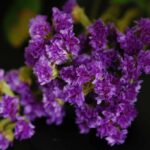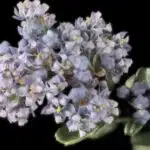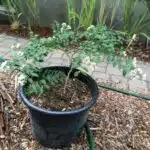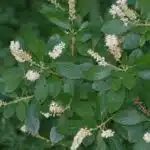Bloomerang Lilacs are a popular choice for gardeners and horticultural enthusiasts. These lovely shrubs produce fragrant blooms that can last for months, making them an ideal addition to any garden or landscape. However, growing and caring for Bloomerang Lilacs can be a challenge, especially for those who are new to gardening or have limited experience with plants.
In this article, we will provide you with a comprehensive guide on how to grow and care for Bloomerang Lilac. We will discuss the different types of Bloomerang Lilacs, their growth habits, soil requirements, watering needs, pruning techniques, and more. Whether you are a seasoned gardener or just starting out, this guide will help you successfully cultivate these beautiful shrubs and enjoy their vibrant blooms year after year.
Understanding The Different Types Of Lilacs
Lilacs are a beloved flowering shrub that have been cultivated for centuries, with numerous species and varieties found throughout the world. These fragrant plants come in a range of colors, from white to deep purple, with different shapes and sizes of blooms. Understanding the various types of lilac flowers can help you choose the perfect variety for your garden.
One of the most common types of lilacs is the Syringa vulgaris, or common lilac, which has large clusters of fragrant flowers in shades of pink, purple, blue, and white. Another popular option is the Syringa pubescens subsp. patula, or Manchurian lilac, which has smaller blooms but a longer blooming season than other varieties. The Syringa reticulata, or Japanese tree lilac, is a larger shrub or small tree with creamy white flowers that bloom later in the season.
While all lilacs share certain characteristics such as fragrance and attractive blooms, there are some key differences between varieties that should be considered when selecting one to grow. Some have larger or smaller flowers than others; some bloom earlier or later in the season; and some are better suited to specific climates or soil types. By understanding these differences, you can choose a lilac variety that will thrive in your garden and provide years of beauty and enjoyment.
Understanding the different types of lilacs is just the first step in selecting the perfect flowering shrub for your garden. Once you’ve chosen a variety that suits your needs and preferences, it’s important to learn how to care for it properly so it can reach its full potential. In the following section, we’ll explore some of the benefits of growing bloomerang lilacs and offer tips on how to keep them healthy and vibrant year after year.
Benefits Of Growing Bloomerang Lilacs
Understanding the Different Types of Lilacs is crucial for anyone looking to grow and care for bloomerang lilacs. These shrubs are a hybrid of traditional lilacs and boast a longer blooming period, making them an attractive option for any garden. The bloom time for bloomerang lilacs typically lasts from late spring to early fall, which is a significant advantage over other types of lilacs that have a shorter flowering period.
Benefits of Growing Bloomerang Lilacs are numerous. First, they require minimal maintenance, making them ideal for busy gardeners who want to enjoy beautiful flowers without spending hours caring for them. Secondly, their long blooming season means that they will provide color and fragrance throughout most of the growing season. Additionally, they are generally more disease-resistant than other types of lilacs, making them an excellent choice for those who live in areas with high humidity or frequent rain.
Comparison is essential when selecting plants for your garden. When comparing bloomerang lilacs to other types of plants, it’s important to consider their unique qualities. While traditional lilacs have a more intense scent and larger blooms, bloomerang lilacs offer longer-lasting flowers and require less upkeep. Ultimately, choosing the right plant depends on your individual preferences and the conditions in which you plan to grow them.
When considering how to grow and care for bloomerang lilac, choosing the right location is crucial. Blooming requires at least six hours of direct sunlight per day, so choose a spot that receives plenty of sun exposure. Additionally, the soil should be well-draining but also rich in nutrients to promote healthy growth. With these considerations in mind, you can select the perfect location for your new addition to your garden!
Choosing The Right Location For Your Bloomerang Lilac
Did you know that bloomerang lilacs are hardy in USDA zones 3-7 and can tolerate winter temperatures as low as -40°F? This makes them one of the most resilient plants you can grow in your garden. However, to ensure your bloomerang lilac thrives, you need to choose the right location for it.
Sun exposure is crucial for the growth and flowering of bloomerang lilacs. These plants require at least 6 hours of sunlight each day to bloom abundantly. So, when choosing a spot for your bloomerang lilac, look for an area that receives full sun or partial shade. An ideal location would be one that gets morning sun and afternoon shade, as this will protect the plant from the scorching heat of the midday sun.
Apart from sun exposure, soil type is also an essential factor to consider when choosing a location for your bloomerang lilac. These plants prefer well-draining soil with a pH level between 6.0 and 7.5. If your soil is heavy clay or compacted, amend it with organic matter such as compost or peat moss to improve drainage and fertility. Additionally, avoid planting your bloomerang lilac near areas with standing water or where water pools after rainfall.
As crucial as choosing the right location may be, preparing the soil correctly before planting is equally important. In the next section, we will discuss how to prepare the soil adequately for planting your bloomerang lilac.
Preparing The Soil For Planting
Before planting your bloomerang lilac, it is essential to prepare the soil properly. The first step in this process is to conduct a soil test to determine the soil’s nutrient content and pH levels. You can purchase a soil testing kit from any garden center or have it professionally done through a soil testing laboratory. Knowing the condition of your soil will help you determine what nutrients are needed for optimal growth.
Once you have determined what nutrients are required, it’s time to add them to the soil. Adding organic matter such as compost, manure, or leaf mold is an excellent way to improve soil fertility and structure. These organic materials provide essential nutrients such as nitrogen and phosphorus, improve water retention, and promote healthy root development.
After adding organic matter, it’s crucial to mix it into the topsoil thoroughly. You can use a garden fork or tiller to break up any clumps and ensure that the organic matter is evenly distributed throughout the topsoil. Once you have finished mixing in the amendments, rake the surface smooth and level before planting your bloomerang lilac.
Moving from preparing your bloomering lilac’s soil for planting, we’ll now discuss how best to plant your lilac shrub for optimal growth.
Planting Your Bloomerang Lilac
Just as a chef needs to prepare the ingredients before cooking, so too must a gardener prepare the soil before planting their blooms. While it may not seem like much, this step is crucial in ensuring that your bloomerang lilac thrives and produces beautiful, fragrant flowers year after year. The best time to start preparing your soil is in the fall or early spring, giving it enough time to settle and stabilize before planting.
To begin, you’ll need a few basic tools: a spade or shovel, a garden fork, and a rake. Start by removing any weeds or debris from the area where you plan on planting your lilac. Then use your spade or shovel to loosen the top layer of soil and remove any rocks or roots that could impede root growth. Once you’ve loosened the soil, use your garden fork to further break up any clumps of dirt and improve drainage. Finally, rake the soil smooth and level.
When it comes to spacing your lilacs, they should be planted at least 5-6 feet apart from one another to allow for ample room for growth. As for companion plants, consider adding other low-growing perennials such as creeping phlox or sedum around the base of your lilac bush for added interest and color contrast. With these tips in mind, you’ll be well on your way to growing healthy and vibrant bloomerang lilacs in no time!
Now that you’ve prepared the soil and planted your bloomerang lilac correctly, it’s time to turn our attention towards watering them properly. This is an essential aspect of care as improper watering can lead to stunted growth or even death of the plant.
Watering Your Bloomerang Lilac
Watering your bloomerang lilac is a crucial aspect of its care routine. These plants require regular watering, but it’s important not to overwater them as they don’t tolerate soggy soil. The frequency of watering will depend on various factors such as the climate, soil type, and size of the plant.
To determine the watering frequency for your bloomerang lilac, check the soil moisture regularly by sticking your finger about an inch deep into the soil. If it feels dry at that depth, it’s time to water. However, if it still feels moist, wait for a few more days before checking again. Remember that these plants prefer evenly moist soil rather than being subjected to long periods of drought followed by heavy watering.
When watering your bloomerang lilac, use a gentle stream of water and aim it towards the base of the plant rather than overhead. This technique ensures that the water reaches the root system where it’s needed most. Avoid getting any water on the leaves as this can lead to fungal diseases. Additionally, consider adding a layer of mulch around your plant to help retain moisture in the soil and reduce evaporation. With proper watering techniques in place, you can enjoy a healthy and vibrant bloomerang lilac all season long!
As important as watering is for your bloomerang lilac’s health, fertilizing is also essential for promoting growth and flowering. By providing adequate nutrients to your plant through fertilization, you’ll be supporting its overall health and resilience against pests and diseases. Keep reading to learn more about how to properly fertilize your bloomerang lilac for optimal results.
Fertilizing Your Bloomerang Lilac
Fertilizing is an important part of caring for a Bloomerang Lilac. There are a variety of fertilizers that can be used, including organic, inorganic, and slow-release fertilizers. Fertilizing should be done in the spring and summer months, at least once every two months. The amount of fertilizer used should be in accordance with the directions on the package.
Types Of Fertilizer
As a horticultural specialist, it is imperative to share the importance of fertilizing your bloomerang lilac. Choosing the right type of fertilizer plays a key role in promoting healthy growth and vibrant blooms. Among the two types of fertilizers available, organic and synthetic, the former is often preferred by many gardeners as it is derived from natural sources such as animal manure, compost, or bone meal. Organic fertilizers are rich in nutrients and slowly release them over time, making them ideal for bloomerang lilacs.
It’s important to apply fertilizer at the best time for optimal results. Bloomerang lilacs should be fertilized twice a year – once in early spring before new growth appears and again in late fall after blooming has ended. During these periods, plants are actively growing and require additional nutrients to support their growth. Applying fertilizer during these times ensures that your bloomerang lilac will receive adequate nutrients when it needs them most.
In conclusion, choosing the right type of fertilizer and applying it at the proper time can significantly impact the health and beauty of your bloomerang lilac. While organic fertilizers are often preferred due to their natural composition, synthetic fertilizers can also be effective if used properly. Remember to follow label instructions carefully when applying any type of fertilizer to avoid damaging your plant. By taking care to properly fertilize your bloomerang lilac, you can enjoy its beautiful blooms for years to come!
Fertilizing Frequency
As a horticultural specialist, it is essential to educate gardeners on the appropriate frequency of fertilizing their bloomerang lilacs. The frequency of fertilization depends on various factors, such as soil fertility, plant age, and growth rate. However, applying fertilizer twice a year is generally recommended for optimal results.
Best fertilizers for bloomerang lilacs are those that are high in phosphorus and potassium. These two nutrients promote healthy root development and support flower production. Organic fertilizers such as compost or bone meal are excellent choices as they slowly release nutrients over time, providing sustained nutrition to your plants.
Fertilizing schedule for bloomerang lilacs involves applying fertilizer once in early spring before new growth appears and again in late fall after blooming has ended. Applying fertilizer during these periods ensures that your plants receive adequate nutrients when they need them most. Always remember to follow label instructions carefully when applying any type of fertilizer to avoid damaging your plant. By adhering to the proper fertilizing schedule, you can help ensure the health and beauty of your bloomerang lilac year after year.
Pruning Techniques For Bloomerang Lilacs
One of the most important aspects of growing and caring for bloomerang lilacs is proper pruning. This not only helps keep the plant healthy but also encourages it to produce more blooms. Pruning frequency for bloomerang lilacs should be done at least once a year, preferably in late winter or early spring before new growth starts.
When it comes to pruning tools, it’s important to choose the right ones. Hand pruners are great for smaller branches, while loppers work better on thicker ones. It’s also important to keep your tools clean and sharp to avoid damaging the plant. Always make sure to cut back any dead or damaged wood first, then remove any crossing or rubbing branches.
Proper pruning techniques can help keep bloomerang lilacs healthy and blooming beautifully year after year. The next section will cover dealing with pests and diseases, which can also impact the health of your plant if left unaddressed.
Dealing With Pests And Diseases
Identifying symptoms of pests and diseases is an essential aspect of maintaining the health of your bloomerang lilac. Some common signs of insect infestations include distorted or discolored leaves, holes in the leaves, and visible insects on the plant. Diseases can present themselves through spots or discoloration on the leaves, wilting or drooping branches, and a general decline in plant health.
If you notice any symptoms of pests or diseases, it is important to act quickly to prevent further damage. One option for natural remedies is to use neem oil, which is effective against a wide range of pests and diseases. You can mix neem oil with water and spray it onto the affected parts of the plant. Another option is to use a solution of water and dish soap, which can suffocate certain pests.
Prevention is key when it comes to pest and disease management. Make sure your bloomerang lilac is planted in well-draining soil, receives adequate sunlight and water, and is pruned regularly to promote airflow around the plant. Additionally, remove any dead or diseased branches as soon as possible to prevent the spread of disease. By identifying symptoms early on and taking preventative measures, you can maintain the health and beauty of your bloomerang lilac for years to come.
Transition: While preventing pests and diseases should be a top priority for any gardener, overwintering your bloomerang lilac properly is equally important. Here are some tips for ensuring your plant survives the winter months.
Tips For Overwintering Your Bloomerang Lilac
To ensure your bloomerang lilac survives the harsh winter months, proper overwintering techniques are crucial. Mulching is one effective method to protect your shrub from the cold weather. This process involves covering the base of the plant with organic matter such as leaves or straw. This layer will help insulate the soil and roots, keeping them warm and protected from freezing temperatures.
Another winter protection method is to provide a windbreak for your bloomerang lilac. You can create a barrier using burlap or any other breathable material around your shrub, which will shield it from strong gusts of wind that can cause damage. Additionally, you can wrap your shrub in frost cloth or blankets for extra insulation.
By implementing these mulching techniques and winter protection methods, you can ensure that your bloomerang lilac survives the winter season unscathed. In our next section, we will discuss how to propagate bloomerang lilacs so you can share their beauty with others.
Propagating Your Bloomerang Lilac
Having successfully overwintered your bloomerang lilac, it’s time to propagate this fragrant and beautiful shrub. Propagation methods include softwood cuttings or layering. Softwood cuttings should be taken in early summer when the new growth is still green and flexible. Layering can be done in late spring or early summer by bending a low-lying branch to the ground and securing it with a stake or rock.
The best time to propagate your bloomerang lilac is during the active growing season, which is typically from late spring to early fall. During this time, the plant will be producing new growth and actively taking up water and nutrients. This will give your cuttings or layered branches the best chance of survival as they develop their own roots.
To ensure successful propagation, make sure you are using healthy parent plants that are free from disease or pests. Use clean tools when taking cuttings or layering branches, and provide consistent moisture and light until your new plants are established. With proper care, you can enjoy multiple bloomerang lilacs in your garden for years to come.
As you begin propagating your bloomerang lilac, you may have some questions about care and maintenance. In the next section, we’ll address some frequently asked questions about this popular shrub so that you can continue to nurture it for optimal growth and beauty.
Frequently Asked Questions About Bloomerang Lilacs
FAQ Answers about Bloomerang Lilacs
When is the best time to prune bloomerang lilacs? Bloomerang lilacs bloom twice a year, once in the spring and again in the late summer or early fall. It is important to prune them immediately after their first bloom cycle to promote new growth and encourage more flowers for their second bloom cycle. Prune them no later than mid-July to ensure they have enough time to grow new shoots before winter.
Can I grow bloomerang lilacs in containers? Yes, bloomerang lilacs can be grown in containers, but they may require more care than if grown in the ground. Choose a container that is at least 18 inches deep and wide with drainage holes at the bottom. Use a high-quality potting mix and fertilize regularly during the growing season. Ensure that the soil does not dry out completely between watering.
How often should I fertilize my bloomerang lilac? Bloomerang lilacs benefit from regular fertilization, especially when grown in nutrient-poor soil or containers. Fertilize them once in early spring before new growth begins and again after their first bloom cycle has finished. Use a balanced fertilizer with equal parts nitrogen, phosphorus, and potassium.
Common Problems with Bloomerang Lilacs
Despite being relatively low-maintenance plants, bloomerang lilacs are susceptible to some common problems. One of these problems is powdery mildew, which appears as a white powdery coating on leaves and stems. To prevent this disease from developing, ensure that your plants have good air circulation and avoid overhead watering.
Another problem is leaf spot, which causes brown or black spots on leaves and can lead to defoliation if left untreated. Leaf spot can be prevented by avoiding overhead watering and removing infected leaves as soon as possible.
Lastly, aphids are common pests that can infest bloomerang lilacs, causing distorted growth and yellowing of leaves. Insecticidal soap or a strong blast of water can be used to control aphids.
Transition: While there are common problems that may arise when caring for bloomerang lilacs, there are also some common mistakes that can be easily avoided.
Common Mistakes To Avoid When Caring For Bloomerang Lilacs
Like a delicate flower that needs nurturing to bloom, bloomerang lilacs require careful attention to thrive. While it may seem overwhelming at first, avoiding common mistakes in caring for these plants can make all the difference. By doing so, you can enjoy the beauty and fragrance of these lovely flowers for years to come.
One common problem with bloomerang lilacs is improper pruning. Many gardeners make the mistake of trimming them too early or too late in the season, which can affect their growth and flowering. It’s important to prune them at the right time and in the right way to ensure optimal health and beauty.
Another issue that arises with bloomerang lilacs is over-fertilization. While it may be tempting to add extra nutrients to your soil, too much fertilizer can actually harm your plants. Over-fertilization can lead to burning of leaves, reduced flowering, or even death of your beloved blooms. Be sure to follow instructions carefully when fertilizing your lilacs and avoid applying too much fertilizer.
Troubleshooting common bloomerang lilac issues requires careful attention and patience. By avoiding common mistakes such as improper pruning or over-fertilization, you can ensure that your plants stay healthy and beautiful year after year. Remember that while caring for these lovely flowers may require some effort on your part, the reward of enjoying their beauty is well worth it!
Troubleshooting Common Bloomerang Lilac Issues
Bloomerang lilacs are generally hardy and low-maintenance plants. However, like any other plant, they can encounter some issues that may hinder their growth and bloom quality. Here are some of the most common problems that you may face with your bloomerang lilac and how to address them.
One of the most prevalent issues with bloomerang lilacs is leaf scorch, which is caused by excessive heat or drought conditions. Leaf scorch manifests as brown edges on leaves, which eventually turn yellow and fall off prematurely. To prevent this from happening, make sure to give your bloomerang lilac sufficient water during hot and dry spells. Also, consider planting it in a spot where it can get partial shade during the hottest part of the day.
Another problem that you might encounter with your bloomerang lilac is powdery mildew. This fungal disease appears as a white powder on leaves, stems, and flowers, causing them to look unsightly and stunted in growth. You can combat powdery mildew by removing infected parts of the plant immediately upon detection. You can also apply a fungicide spray once a week until the mildew disappears completely. Make sure to follow instructions on the label for safe use.
| Problem | Cause | Common solutions | Preventive measures |
|---|---|---|---|
| Leaf Scorch | Excessive heat or drought conditions | Provide adequate water; Plant in partial shade | Water regularly; Mulch soil to retain moisture |
| Powdery Mildew | Fungal infection | Remove infected parts; Apply fungicide spray | Provide good air circulation; Avoid overhead watering |
To ensure that your bloomerang lilac remains healthy and vibrant throughout its lifespan, it’s important to keep an eye out for any potential problems that may arise. By following preventive measures such as providing adequate water, planting in appropriate locations or applying fungicide sprays, you can prevent issues such as leaf scorch and powdery mildew from occurring. Regular pruning and fertilizing can also help keep your bloomerang lilac in top shape. With proper care, your bloomerang lilac will reward you with beautiful blooms year after year.
Now that you have learned how to identify and address common problems with your bloomerang lilac, it’s time to sit back and enjoy its beauty. Whether used as a specimen plant or in a mixed border, the bloomerang lilac is sure to add color and fragrance to any garden. Remember to provide it with the necessary care and attention it deserves for optimal results.
Enjoying The Beauty Of Your Bloomerang Lilac
After addressing any common issues with your bloomerang lilac, it is time to enjoy the beauty of this stunning plant. One way to do so is by arranging cut bloomerang lilacs in a vase or other container. When cutting the flowers, be sure to do so in the morning when the blooms are at their freshest. Cut stems at an angle and place them immediately into a container of water. Change the water every few days and recut the stems to ensure they stay fresh.
Another way to appreciate your bloomerang lilac is by capturing its beauty in photographs. Whether you are an experienced photographer or just starting out, there are many ways to showcase your lilac’s beauty through photography. Try experimenting with different angles and lighting conditions to capture its unique features. Consider using a macro lens for close-up shots of its intricate blooms or use a wider-angle lens to capture its overall shape and size.
As you enjoy your bloomerang lilac, remember that proper care is still essential for maintaining its health and beauty. Regular pruning will help promote new growth and prevent overcrowding, which can lead to disease and pests. Watering should be done deeply but infrequently, allowing the soil to dry out slightly between watering sessions. With proper care and attention, your bloomerang lilac can continue to provide you with stunning blooms year after year.
Frequently Asked Questions
Can Bloomerang Lilacs Be Grown In Containers Or Do They Need To Be Planted In The Ground?
The concept of container gardening can be likened to the idea of a mobile home, as it allows for flexibility and adaptability when it comes to growing different types of plants. With regards to bloomerang lilacs, one may wonder if they can thrive in containers or if they are better off planted in the ground. As a horticultural specialist, I can say that bloomerang lilacs can indeed be grown in containers given that the soil requirements are met. It is important to use well-draining soil with a pH level between 6.0-7.0 and to ensure that the container has adequate drainage holes to prevent waterlogging. Additionally, regular fertilization and pruning will help maintain the health and beauty of the plant. Overall, whether planted in the ground or grown in a container, bloomerang lilacs have the potential to add vibrancy and fragrance to any space they occupy.
How Long Does It Take For Bloomerang Lilacs To Start Blooming After Planting?
To ensure successful growth of bloomerang lilacs, it is important to understand the optimal conditions and timeline for their growth. In general, it takes about 2-3 years for bloomerang lilacs to begin blooming after planting. However, this timeline can vary depending on factors such as soil type, moisture levels, and sunlight exposure. To promote healthy growth and faster blooming, it is recommended to plant bloomerang lilacs in well-draining soil with plenty of sunlight and regular watering during dry periods. Additionally, adding compost or fertilizer to the soil can provide necessary nutrients for optimal growth. By following these guidelines, growers can expect a beautiful display of blooms from their bloomerang lilac plants in a timely manner.
Do Bloomerang Lilacs Attract Pollinators Like Bees And Butterflies?
Pollinator benefits are a crucial aspect of maintaining a healthy garden ecosystem, and lilac varieties such as the bloomerang lilac can be an excellent addition to any landscape. These fragrant shrubs bloom in the spring and then again in the fall, providing a source of nectar for bees and butterflies during both seasons. The vibrant colors and enticing aroma of bloomerang lilacs attract pollinators, which play a vital role in the reproduction of many plants. By incorporating these beautiful shrubs into your garden design, you can help support local pollinator populations while adding beauty and charm to your outdoor space.
Can Bloomerang Lilacs Be Pruned In The Fall Or Should Pruning Be Done In The Spring?
When it comes to pruning bloomerang lilacs, there are differing opinions on whether fall or spring is the best time to do so. Some experts suggest that pruning in the fall could lead to damage during the winter months, while others argue that early pruning can encourage more blooms in the spring. Ultimately, the decision of when to prune should be based on individual circumstances and preferences. It’s important to note that excessive pruning can have negative effects on blooming, so it’s best to only remove dead or damaged wood and avoid cutting back more than one-third of the plant at a time. Regardless of when you choose to prune, proper care and maintenance throughout the year can help ensure healthy growth and abundant blooms for your bloomerang lilac.
Can Bloomerang Lilacs Be Grown In Warmer Climates Or Do They Require A Colder Climate?
Bloomerang lilacs are a relatively new variety of lilac that can bloom twice in one season, making them an attractive option for gardeners. Growing techniques for bloomerang lilacs are similar to other varieties of lilacs, requiring well-draining soil and full sun exposure. However, unlike traditional lilacs that require a colder climate with winter dormancy to thrive, bloomerang lilacs can tolerate warmer climates as long as they are given adequate water and protection from extreme heat. It is important to note that while bloomerang lilacs can survive in warmer climates, they may not produce as many blooms or reblooms as they would in a cooler climate.
Conclusion
Bloomerang Lilacs are a beautiful addition to any garden, and with proper care and attention, they can thrive in both containers and in-ground plantings. These shrubs typically start blooming within two years of planting, and their fragrant flowers attract pollinators such as bees and butterflies.
Pruning is an important aspect of maintaining the health of Bloomerang Lilacs. While some may choose to prune in the fall, it is generally recommended to wait until spring to allow for new growth. Additionally, while these shrubs do prefer colder climates, they can still be grown in warmer regions with proper care and attention.
As the saying goes, “April showers bring May flowers,” but with Bloomerang Lilacs, you can enjoy fragrant blooms throughout the growing season. By following proper planting techniques and maintenance practices, you can ensure that these beautiful shrubs will thrive in your garden year after year.
Image Credits
- “Syringa BLOOMERANG™ Purple, 2017” by F. D. Richards (featured)





























